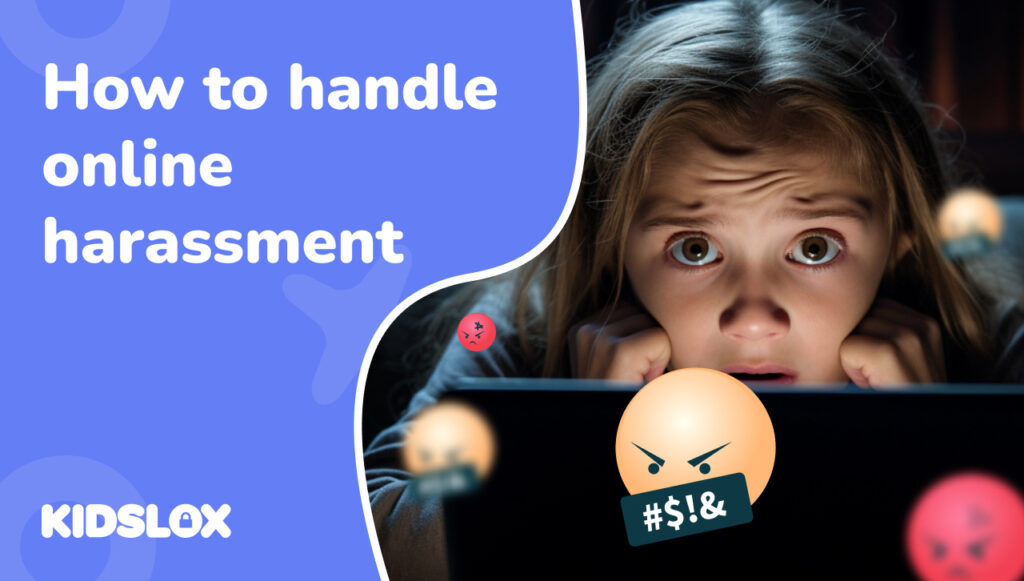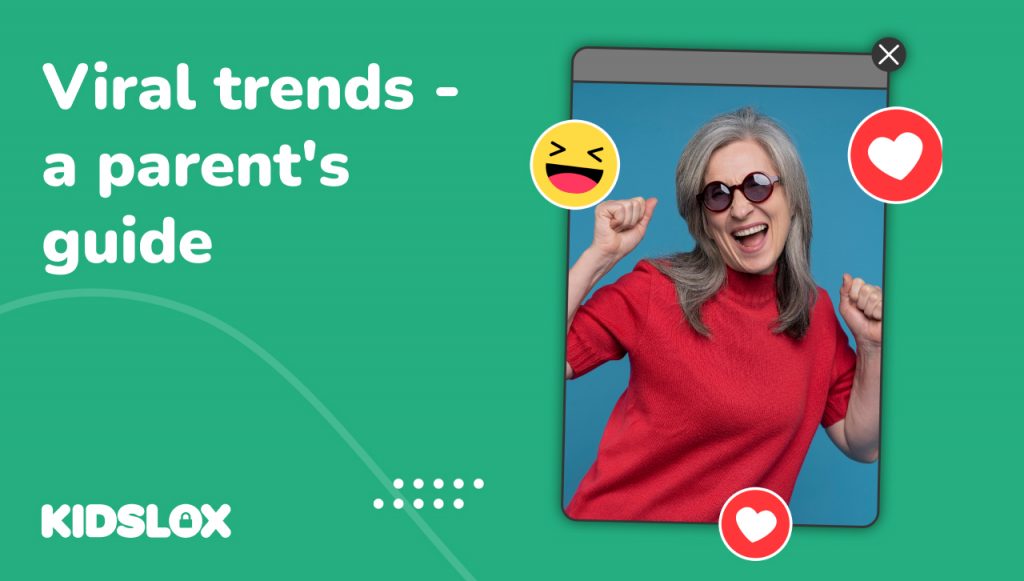What it looks like, how to spot the signs, and how to support your child through it.
If you’re a parent of a child or teen who spends time on social media — and let’s face it, most do — you’ve probably worried at some point about what really goes on behind the screen. From fun trends and group chats to viral content and endless scrolling, the digital world can feel like a double-edged sword: full of connection, but also full of risk.
And one of the biggest risks today’s young people face? Online harassment.
Whether it’s being targeted in a group chat, bullied on Instagram, or receiving threatening messages from anonymous accounts, cyberbullying and online harassment can have a deep and lasting impact — emotionally, socially, and psychologically.
The problem is, it’s not always easy to spot. Kids often don’t talk about it. They might not even realise they’re experiencing harassment — or they might blame themselves. That’s why it’s crucial for parents to understand what online harassment looks like, how it happens, and what to do if it’s happening to your child.
In this Guide To, we’ll walk you through everything you need to know — from recognising the red flags to building digital resilience at home. Because while the internet might be here to stay, so is your ability to help your child stay safe in it.
What Is Online Harassment?
Online harassment refers to any kind of threatening, intimidating, or abusive behaviour that takes place over the internet or through digital communication. It can be public or private, subtle or aggressive, and often happens across multiple platforms — from social media to messaging apps, gaming platforms, and beyond.
Unlike in-person bullying, being harassed online can feel relentless. It follows children home, lives on their phones, and can take many forms — from unkind comments in a group chat to repeated targeting in TikTok videos, or even threats from anonymous accounts.
Online harassment includes:
- Cyberbullying – repeated insults, humiliation, or exclusion online
- Threatening messages – direct or indirect threats of harm or intimidation
- Doxxing – sharing private information like phone numbers or addresses without consent
- Social media harassment – unwanted comments, tagging, or stalking behaviours
- Image-based abuse – sharing or threatening to share images to cause distress
What makes social media harassment especially damaging is that it often plays out in public — with likes, shares, or group dynamics amplifying the harm.
Understanding what online harassment and cyberbullying look like is the first step in protecting your child — and empowering them to speak up if it happens.
How Online Harassment Shows Up
Online harassment isn’t confined to just one app or one type of behaviour. It adapts to wherever young people spend time online — often evolving with trends and platforms. That’s why it’s important to understand the different ways harassment online can appear, and how it can affect your child in ways that aren’t always obvious.
Here are some of the most common forms:
- Group Chat Targeting
Apps like WhatsApp, Snapchat, or Discord allow group messaging — and while these can be social lifelines, they’re also where exclusion, pile-ons, and cruel jokes often occur. A child might be added to a group just to be mocked, or kicked out repeatedly to humiliate them.
- Social Media Harassment
On platforms like Instagram, TikTok, or X (formerly Twitter), harassment can look like:
- Negative comments on posts or videos
- Tagging someone in cruel content or memes
- Sharing embarrassing content (real or fake)
- Creating fake profiles to impersonate or target them
- Gaming-Related Abuse
Gaming communities on Twitch, Roblox, or Fortnite often use voice chat or direct messaging. Children can be exposed to aggressive language, threats, or exclusionary behaviour during gameplay.
- Anonymous Abuse
Some platforms or third-party apps enable people to send messages without revealing their identity. These are often used to send threats or bullying messages, as the lack of accountability emboldens the harasser.
The thread that links all of these? They feel personal, isolating, and hard to escape. That’s why identifying the signs — and having open conversations — is key.
Why Are Young People So Vulnerable to Online Harassment?
Children and teens are growing up in a world where being online is part of daily life — for learning, friendships, entertainment, and even identity. While this connectivity has huge benefits, it also opens them up to risks they may not fully understand or be emotionally equipped to handle.
Here’s why online harassment can hit them especially hard:
- Their Brains Are Still Developing
Young people are still learning how to manage emotions, assess risks, and build self-esteem. A cruel comment or threatening message can feel world-ending, especially when it plays out publicly.
- Peer Approval Matters
Social status in the digital world can feel just as important (if not more so) than in real life. Likes, shares, and online validation carry weight — so when a peer targets them, the emotional impact is intense.
- It Feels Inescapable
Unlike in-person bullying, online harassment follows them home. It can happen 24/7, on every device, making it hard for kids to switch off or feel safe.
- They May Not Speak Up
Fear of embarrassment, losing device privileges, or not being taken seriously means many children suffer in silence — making parental awareness all the more important.
Understanding these vulnerabilities is the first step to offering the right kind of support.
Signs Your Child May Be Experiencing Online Harassment
One of the most difficult things about online bullying and harassment is that children often hide it — out of fear, shame, or not wanting to worry their parents. That’s why it’s so important to stay alert to subtle changes in mood or behaviour.
Here are some common signs that may indicate your child is being harassed online:
- Withdrawal from Devices or Social Media
They suddenly stop using platforms they once enjoyed, or seem anxious every time their phone lights up.
- Changes in Mood or Behaviour
Irritability, sadness, anxiety, or emotional outbursts — especially after being online — can be red flags.
- Sleep or Appetite Disruptions
Stress from online harassment often shows up physically: difficulty sleeping, nightmares, or changes in eating habits.
- Hiding What They’re Doing Online
Quickly closing apps, deleting messages, or refusing to talk about online activity can be signs something isn’t right.
- Social Withdrawal
They might avoid friends, skip school, or stop wanting to attend social events.
It’s worth remembering: these signs could relate to other issues too — but if several appear at once, it’s worth gently checking in. The most important thing is to keep lines of communication open and judgement-free.
What to Do If Your Child Is Being Harassed Online
Finding out your child is being harassed online can be upsetting — but your calm, supportive response will make all the difference. Here’s a step-by-step guide to help you navigate it:
- Stay Calm and Listen
First and foremost, reassure them it’s not their fault. Avoid jumping straight into solutions or punishment (like taking away their phone), which may make them less likely to open up in the future. Thank them for trusting you — that’s a big deal.
- Save the Evidence
Encourage your child to take screenshots of harassing messages, usernames, images or videos. Document dates, times, and any patterns — even if the content gets deleted later. This is important for reporting.
- Block and Report
Use in-app tools to block the harasser and report abusive content. Platforms like Instagram, TikTok, Snapchat, and Discord all have built-in safety features — and reporting helps stop the behaviour for others, too.
- Involve the School (If Relevant)
If the harassment is from a peer, your child’s school should be informed. Most schools have anti-bullying policies that include cyberbullying, and can help manage peer-to-peer issues offline too.
- Contact the Police (If It Crosses the Line)
If threats have been made, private information shared (doxxing), or explicit content involved, report it to the police. Online harassment can be illegal — and there are laws in place to protect your child.
- Prioritise Mental Health
Harassment, even online, can leave emotional scars. If your child seems anxious or withdrawn, consider support from a school counsellor or therapist.
Helping Your Child Build Digital Resilience
While you can’t always control what your child encounters online, you can give them the tools to navigate it with confidence. Building digital resilience means helping your child feel informed, empowered, and supported — so they’re better equipped to handle challenges like social media harassment or being threatened online.
Here’s how to start:
- Talk Early, Talk Often
Create a safe space to talk about life online — the good, the weird, and the worrying. Try open-ended questions like:
“What’s your favourite app and why?”
“Have you ever seen something online that made you uncomfortable?”
“What would you do if someone was being bullied in a group chat?”
Regular conversations build trust and make it easier for them to come to you when something’s wrong.
- Teach Boundaries and Safety
Help them understand how to:
- Set their accounts to private
- Block, mute or report accounts that feel unsafe
- Say no to online dares or risky trends
- Think critically about what they post and who they engage with
- Be a Role Model
Children learn from what they see. Model healthy phone habits, respectful online behaviour, and digital downtime.
- Encourage Tech-Free Time
Create screen-free moments — like mealtimes or before bed — to give their minds a break and reduce the intensity of online life.
Helpful Resources and Support
If your child is experiencing online harassment or cyberbullying, you’re not alone — and you don’t have to navigate it without help. These organizations offer expert advice, reporting tools, and emotional support for both parents and children:
- StopBullying.gov – Information on bullying prevention and federal anti-cyberbullying
- The Trevor Project – Support for LGBTQ+ youth experiencing bullying or harassment
- Childline – Free, confidential support for children and young people (UK).
- NSPCC / Net Aware – Guides for parents on apps, platforms, and how to talk to kids about online safety.





